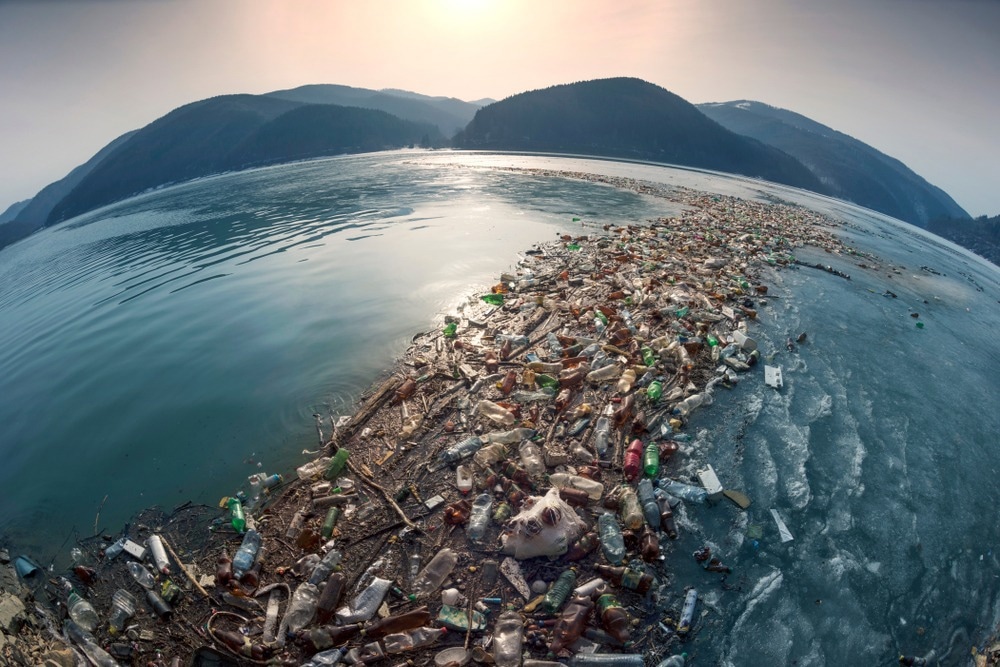Despite the efforts to reduce reliance on single-use plastics, more is added to the world’s heap of plastic waste. Events like the COVID-19 pandemic have only increased the demand for takeaway containers and disposable clothing.

Image Credit: Roman Mikhailiuk/Shutterstock.com
However, one person’s single-use packaging is another person’s useful raw material, according to researchers at UC Santa Barbara. With improvements to an inventive process that can transform polyolefins, the most prevalent type of polymer in single-use packaging, into valuable alkylaromatics—molecular building blocks of surfactants, the primary constituents of detergents and other useful chemicals—they have reimagined the value of single-use plastics. The study was published in the journal Chem.
If we make these surfactants from fossil fuels now and you could make them from waste plastics, then you are not using fossil fuels to make surfactants anymore, and you’re getting another use out of the carbon that went into the plastics.
Susannah Scott, Professor, Chemical Engineering, University of California - Santa Barbara
Susannah Scott holds UCSB’s Mellichamp Chair in Sustainable Catalytic Processing.
Instead of burning or burying plastics in landfills, plastics are repurposed to bypass traditional “dirty” processes for making surfactants while giving single-use plastics a second chance at usefulness.
The investigators built on previous work in which they demonstrated a catalytic method for breaking the strong carbon-carbon bonds that make plastic a difficult material to degrade, then rearranging the molecular chains into alkylaromatic rings. While effective, the original process, which used a platinum-on-alumina catalyst, was slow and produced a low yield of alkylaromatic molecules, according to Scott. “What we’ve done in this paper is show how to do it much better,” she adds.
Adding chlorine or fluorine to the original alumina catalyst increases its acidity, which is vital to their method. The team increased the speed and selectivity of their process by adding acid sites.
It just screams along. It makes the alkylaromatics faster, and we can tune it to make the right-size molecules. It turns out they work together. They have different roles, but you need both of them to be there and in the right ratio so the catalytic cycle doesn’t get stuck at any point.
Susannah Scott, Professor, Chemical Engineering, University of California - Santa Barbara
She explained that they concentrated on identifying the optimal ratio of acid sites to metal sites in their catalyst.
Their one-pot process operates at low temperatures and requires little energy. While the original method required 24 hours to convert plastic into alkylaromatic molecules, the improved method can complete the task in a couple of hours, raising the amount of plastic that can be transformed in a reasonably-sized reactor.
According to Scott, with more improvements, this strategy could be on its way to becoming a viable commercial process. The main goal is to make it widely available, allowing and incentivizing the recovery of single-use plastics.
Using waste plastics as a plentiful raw material, chemical companies could transform the alkylaromatic molecules produced by this process into surfactants used in washing liquids, soaps, cleansers, and other detergents.
Ideally you want to reuse waste plastic for a purpose with a large enough production volume, for which there is significant demand, in order to make a dent in the plastic problem.
Susannah Scott, Professor, Chemical Engineering, University of California - Santa Barbara
She added that to determine whether this method is truly sustainable, it must go through a lifecycle assessment, in which the energy spent and greenhouse gases emitted are calculated at each step. Using waste material prevents the production of additional greenhouse gas emissions, but the energy necessary to run the catalytic process and separate the desired molecules must be considered before scaling up, according to Scott.
If it passes muster, the method could eventually replace the more energy-intensive processes used to create surfactants from scratch.
Scott concludes, “We will need multiple targets to deal with the waste plastic problem, but this is a fairly big one. This is worth doing.”
Journal Reference:
Sun, J., et al. (2023). Bifunctional tandem catalytic upcycling of polyethylene to surfactant-range alkylaromatics. Chem. doi.org/10.1016/j.chempr.2023.05.017.